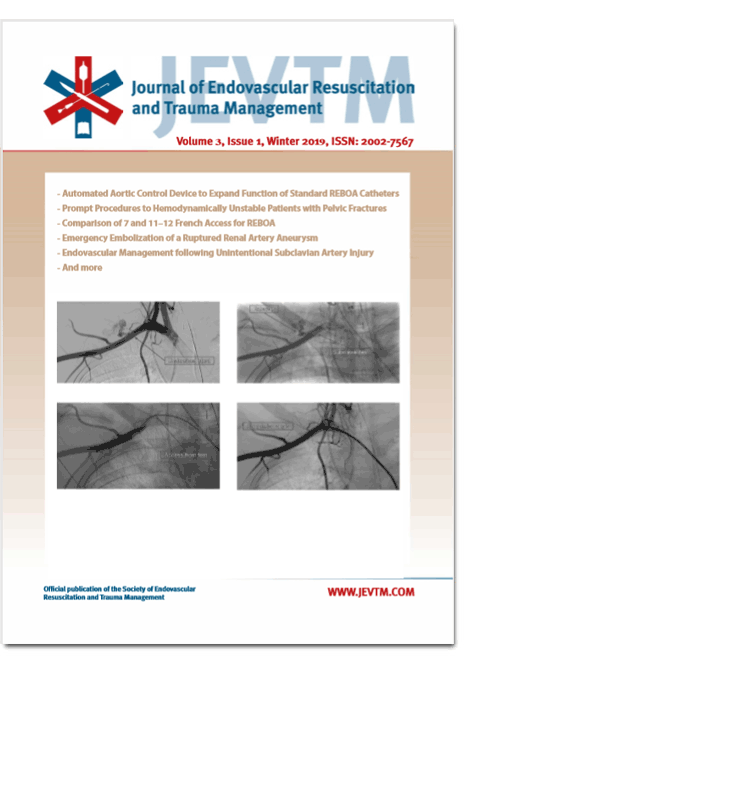Prompt Procedures to Hemodynamically Unstable Patients with Pelvic Fractures
DOI:
https://doi.org/10.26676/jevtm.v3i1.75Keywords:
Pelvic Fracture, Interventional Radiology, Damage ControlAbstract
Background: Angioembolization is a widely accepted method for an effective and useful hemostasis procedure in pelvic fracture (PF) patients. We evaluated and introduced the time course of the initial management and angiogra-phy in hemodynamically unstable pelvic fracture patients.
Methods: We retrospectively reviewed 56 PF patients who underwent interventional radiology (IR) from May 2010 to Dec 2016. We defined arrival to angiography time (ATAT), and this was recorded in all enrolled patients in which the first angiography image represented the initiation of angiography. We also evaluated total embolization time (TET) and single artery embolization time (SAET; time for artery selection, injection, embolization, and confirmation).
Results: The median ATAT and TET were respectively 73 and 33 minutes. They were much faster than the previous reports.
Conclusions: Our trauma IR strategy with a specialized team might contribute to a shortening of the management time
Published
How to Cite
Issue
Section
License
Copyright (c) 2019 Journal of Endovascular Resuscitation and Trauma Management

This work is licensed under a Creative Commons Attribution 4.0 International License.
Authors of content published in the JEVTM retain the copyright to their works.
Articles in the JEVTM are published under the terms of a Creative Commons CC BY 4.0 license, which permits use, downloading, distribution, linking to and reproduction in any medium, provided the original work is properly cited.




